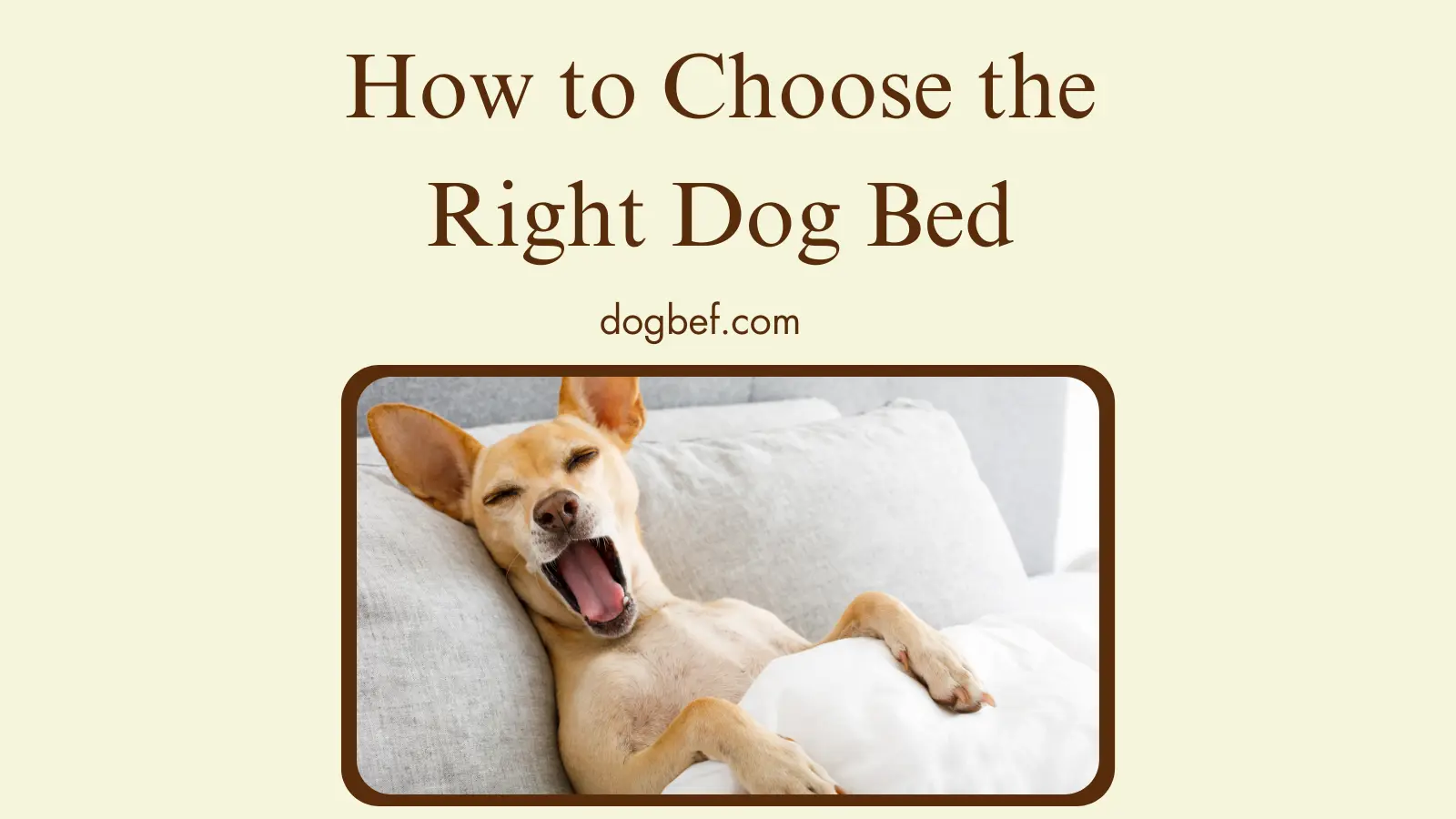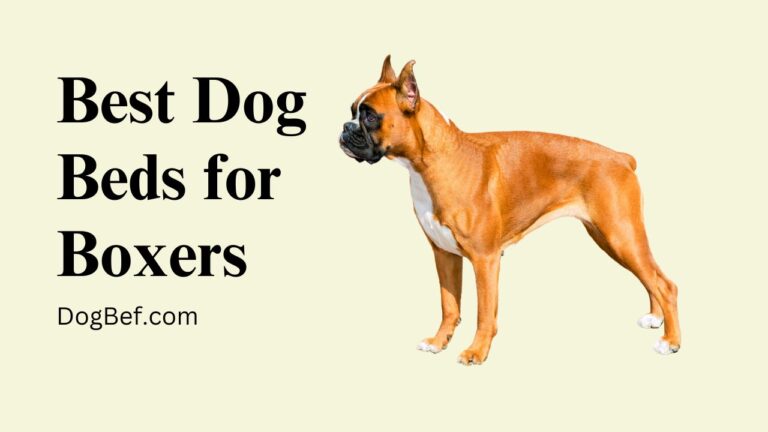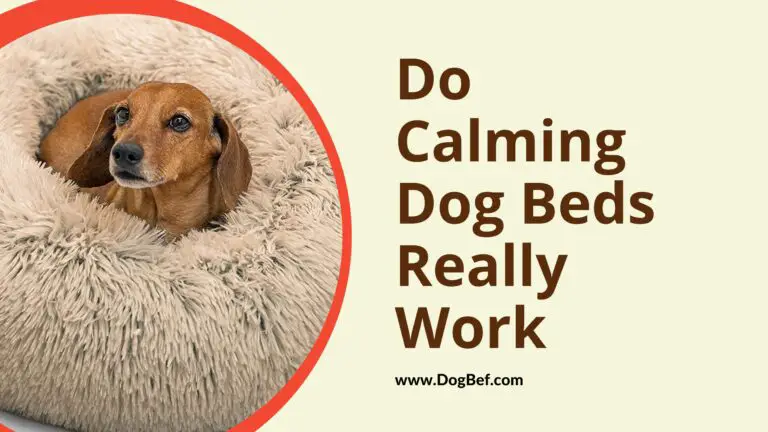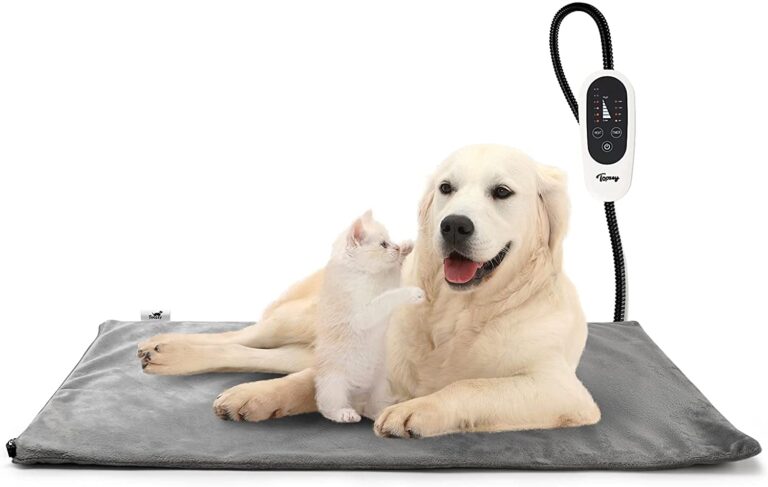Choosing the right dog bed is crucial for ensuring your dog’s comfort and health. Their bed serves as a personal haven a place for them to fully relax and get the rest they need. An appropriate dog bed provides important support for their body, keeps them nice and warm, and gives them a sense of safety and security. It can be viewed as their own little nest.
With so many options on the market, it can be tricky to select the perfect model for your pup. However, bed is necessary for dogs so taking the time to find a dog bed tailored to your dog’s needs will provide them with the comfort they deserve after a long day of play and adventure. The right dog bed allows your furry friend to get a good night’s sleep and wake up feeling refreshed and ready to go, day after day.
Factors to Consider When to Choose the Right Dog Bed
There are a few key aspects to take into account while selecting the ideal dog bed for your pet. When choosing a dog bed, have in mind the following important considerations:

Dog’s Size
One of the most important factors is selecting a dog bed that properly fits your dog. Take measurements of your pup while they are lying down in their normal sleeping position. Measure from the tip of their nose to the base of their tail to get their length. Also, measure their height from the floor to the top of their shoulders while lying down. With these measurements, you can find a dog bed that allows them to fully stretch out without hanging their head or feet off the edges. Having ample room to spread out helps them get genuinely comfortable and relaxed. If they have to curl up tightly or can’t change positions, the bed is too small.
Dog’s Sleeping Positions
Pay attention to the way your dog normally sleeps – do they curl up in a tight ball or sprawl out in all directions? Dog beds come in different shapes and styles to match unique sleeping positions. For dogs that love to stretch out, a rectangular or oval-shaped bed provides enough space. If your dog sleeps all bundled up, consider a round or curved bed that wraps around them. Memory foam contours around dogs that sleep in weird positions. Orthopedic beds cradled by bolsters are great for dogs that snooze on their sides. Pick a shape that works with, not against, their sleeping habits.
Indoor vs. Outdoor Use
Determine if this bed will live inside your home or outdoors. Outdoor dog beds need to be made of durable, weather-resistant materials that can withstand the elements. Resilient frames and tightly woven synthetic fabrics shed rain, dew, and snow. They should have a waterproof bottom layer to keep dampness from seeping in. For indoor use, prioritize soft, warm, pillowy fabrics like fleece, flannel, and faux fur that dogs can really sink into. These cozy materials are prone to faster wear and tear than outdoor beds are built to resist.
Materials for Fill and Fabric
High-quality materials determine the comfort and longevity of a dog bed. The inner cushioning should contain resilient fill like memory foam, egg crate foam, polyfill stuffing, or cedar chips that provide ergonomic orthopedic support and retain their shape. The outer cover fabric touches your dog’s skin, so ensure it is soft and breathable. Popular materials are microsuede, fleece, and flannel. The most critical materials factor is that both the inner fill and outer fabric are machine washable for easy cleaning.
Washability
One of the biggest perks to look for in a dog bed is machine washability. Dog beds get dirty quickly from fur, dirt, drool, and accidents. Being able to remove the bed cover and toss it directly into the washing machine saves you time and hassle. It also enables regular cleaning to keep odors at bay. Dryer-safe materials allow the entire bed to be refreshed and fluffed back up with heat. Non-washable beds require inconvenient spot cleaning and vacuuming. Learn to wash dog beds with stuffing.
Health Conditions
Specific health issues your dog faces could require a bed tailored to their needs. Older dogs with joint pain and mobility issues need orthopedic beds with bolstered edges for support when standing up and stability when lying down. They provide relief for sore joints. For dogs that run hot, cooling gel beds keep them from overheating. The gel insert evenly distributes body heat to prevent hot spots. Arthritic dogs often love heated beds to loosen stiff joints.
Destructive Chewers
For aggressive chewers, invest in a highly durable chew-resistant bed. These are made of ripstop ballistic nylon fabric, dense premium canvas, or puncture-proof ballistic material. Tough binding and reinforced seams prevent determined chewers from tearing them open. Durable outdoor beds work well, or you can get chew-proof casings to place around a bed. Save your pup and your wallet by selecting a bed built to withstand chewing.
Types of Dog Beds
When it comes to choosing a dog bed, there are several types available in the market. Each type serves a unique purpose and offers different features that cater to different needs. Let’s take a closer look at the most common types of dog beds.
Standard Beds
The most common style is a simple rectangular or square-shaped cushion bed. These provide a basic comfortable sleeping surface for most dogs. Standard beds work for dogs that sleep in a variety of positions and allow stretching out. They come in many sizes with removable covers. These are an affordable starting point.

Nesting Dog Beds
Nesting beds have raised edges to surround your dog for a sense of security and privacy. The enclosed feeling reduces stress and anxiety for dogs who like to burrow. They provide insulation to retain body heat. These beds cater to dogs with a curled-up, nesting sleep position. Washing instructions for the cave dog bed.

Heated Dog Beds
For elderly dogs or dogs prone to feeling chilled, heated beds regulate their temperature. They contain cozy orthopedic cushioning with a buried heating element powered by electricity. Heated beds only warm to your dog’s natural body temperature to prevent overheating. They soothe sore muscles and loosen stiff joints.
Cooling Dog Beds
On the flip side, cooling gel dog beds prevent body heat retention. Gel inserts or layers pull heat away from the surface. Breathable mesh fabrics improve airflow. These beds are ideal for overheated dogs during summer or in hot climates. Cooling beds help regulate temperature.
Elevated Outdoor Dog Beds
Elevated beds lift your dog up off the floor to promote air circulation underneath their body. This keeps them cooler in the summer and warmer in the winter by preventing direct contact with hot or cold floor surfaces. Elevated beds also ease joint pain and keep dogs clean by reducing exposure to dirt or moisture from the ground.
Rugged outdoor beds are designed to withstand all types of weather and damage from chewing or digging. They have steel frames, elevated platforms, and waterproof ballistic nylon covers. Outdoor beds resist rain, snow, sun, dirt, and bugs. They provide comfort and protection for primarily outdoor dogs.

Tips for Choosing the Right Size
Picking the perfect bed size for your pup can seem tricky initially. But following key tips makes it easy.
Test Out Beds In Store or At Home
If possible, bring your dog shopping to test dog beds at the pet store. Have them fully lay down on the bed as if napping. This allows both you and your dog to get a sense of the fit and comfort. See if they can stretch out without touching the edges and get up without issue. Testing beds gives you both the chance to try before you buy.
Buy from pet stores that allow returns and test the bed once you get home before the return period ends. See how your dog uses it after the excitement of being in the store wears off. Make sure they can sleep soundly through the night. Return if it turns out to be the wrong size.
Take Precise Measurements
Use a measuring tape at home to measure your dog from the tip of its nose to the base of its tail while lying on its side. This will give you their full length when sleeping. Also, measure from the floor to the top of their shoulders while lying down to get their height. Compare these measurements to the dimensions of the dog bed to ensure it can fit your dog when they are fully sprawled out. Having their exact measurements is more accurate than weight.
Prioritize Dog’s Comfort
Resist the urge to size down too much to save money. Choosing a bed that gives your dog plenty of wiggle room and allows them to reposition is key for their happiness and orthopedic health. Measure for their preferred sleeping style, not just the tight curled-up size they can fit. The bed should be large enough that your dog’s legs aren’t hanging off the sides and they aren’t pressed right against the edges.
Consider Puppy Growth
For puppies, buy a bed much more significant than their current size to accommodate future growth. The mattress needs to last years, not just months. Think about your dog’s expected full-grown size and buy more significant than their current measurements. Large-breed puppies especially experience rapid growth. Get a bed that will transition them from pup to adult without needing constant replacement.
Choose Material Based on Padding Thickness
Bulky cushions like pillow tops allow dogs to sink into the padding, which takes up interior space. Firm orthopedic beds don’t compress much. Take padding thickness into account when judging size. Your dog needs to fit on top of the cushioning material.
Buy For Your Dog’s Future Needs
Senior dogs require more space to stretch out sore joints and easily maneuver in and out of bed due to reduced mobility. For aging pets, get a bed that provides ample room for their current and future physical needs. Growing puppies also benefit from spacious beds they can grow into over time.
Follow The Brand’s Sizing Guidelines
Many dog bed brands provide general sizing charts with recommendations based on average breeds. But your individual dog’s measurements are more precise than standard size categories. Use your dog’s exact length and height to make sure the bed will really fit.
Conclusion
Choosing the right dog bed is an important decision that directly impacts your pup’s comfort and health. With so many types of dog beds on the market, it can be challenging to select the perfect one for your furry friend. By keeping in mind factors like your dog’s size, sleep position, indoor vs. outdoor use, materials, washability, health issues, and chewing habits, you can narrow your options to beds that fit their individual needs.
Measure your dog precisely and prioritize their comfort over saving money on size. Provide ample room for them to stretch out and change positions throughout the night. While choosing a bed for your dog requires some preparation and research on “how to choose the right dog bed”, taking the time to find the perfect match results in a cozy place they will love to curl up in and drift off to sleep. Your dog depends on you to provide a comfortable bed tailored just for them.
FAQs on how to choose the right dog bed:
What are the most important factors when choosing a dog bed?
The main factors to consider are your dog’s size, typical sleeping positions, whether the bed will be used indoors or outdoors, the bed’s materials, washability, your dog’s health issues, and destructive chewing habits. Take measurements of your dog lying down and find a bed that gives them ample room to stretch out in their preferred sleeping style. Make sure outdoor beds are weatherproof and chew-resistant while indoor beds focus on softness. Pick materials like memory foam and removable covers that are machine washable for easy cleaning. Choose cooling gel beds for hot dogs or orthopedic beds for dogs with joint pain. Get highly durable fabrics for aggressive chewers.
How to choose a dog bed size?
Focus on taking precise measurements of your dog rather than going by weight limits or standard size charts. Use a measuring tape to measure your dog from the tip of its nose to the base of its tail while lying on its side. This gives you their length when sleeping fully stretched out. Also, measure from the floor up to the top of their shoulders while lying down to get their height. Compare these measurements to the dimensions of the dog bed. Choose a bed that is at least 2 inches wider and longer than your dog’s measurements to give them plenty of room to reposition.
What dog bed material is best?
Look for high-quality memory foam or egg crate foam cushion filling that provides orthopedic support and retains shape. The outer fabric cover touching your dog’s skin should be soft, breathable, and machine washable, like microsuede, fleece, or flannel. Cedar chips and polyfill stuffing also make good fillings. Make sure cover removability is easy for washing and cleaning. Durable ripstop nylon and ballistic fabrics are best for aggressive chewers. Check what you don’t need to buy.
Should I get an elevated or orthopedic dog bed?
Elevated beds help lift dogs off cold, hot, or wet surfaces while evenly distributing their weight for joint relief. Orthopedic beds provide targeted support for sore joints and muscles with their contoured foam cushioning. Choose elevated beds for outdoor dogs who need airflow and protection from the ground. Get orthopedic beds for elderly dogs or dogs with arthritis who need pain relief. You can also find some beds combining both elevated and orthopedic elements.
How do I buy the right bed for a puppy?
Since puppies grow rapidly, buy a bed much larger than their current size – focus on their expected adult measurements. Avoid sizing based on weight limits, which will soon be obsolete. Remove any inner support frames to allow the bed to grow with your puppy. Prioritize long-lasting durable fabrics and materials that can transition them from puppyhood through adulthood. Machine washable covers are also key for inevitable puppy accidents.
When should I replace my dog’s bed?
Replace dog beds when the inner cushion no longer provides structured support or becomes uneven and compressed. Also if the fabric cover is ripped, badly stained, or retains odors even after washing. Replace if your dog seems uncomfortable, struggles to get up, or has clearly outgrown the size. Standard-use beds should be replaced every 1-2 years.
Links related to dog beds
Dogs Like to Sleep on the Bed rather than the floor







